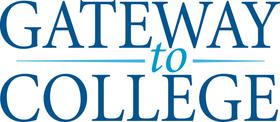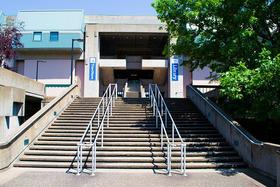7 Problems with Community Colleges — And What Can Be Done About Them
Community colleges serve as critical gateways to higher education, offering accessible and affordable pathways for millions of students each year. Yet, despite their importance, these institutions face deep and persistent challenges. Drawing on the latest 2025 data, here are seven major problems confronting community colleges — and practical solutions that educators, policymakers, and advocates can pursue.
1. Low Completion and Graduation Rates
The Problem:
Despite mission-driven open access, community colleges struggle to graduate students. According to the American Association of Community Colleges (AACC), graduation rates for two-year institutions remain modest. Even when students remain enrolled, many do not complete a degree: one report notes that fewer than 33% of community college entrants across cohorts finish within six years.
Why It Matters:
Without a credential, students may not realize long-term financial uplift, and colleges may underdeliver on their promise of upward mobility.
What Can Be Done:
Adopt proven models like ASAP: Programs such as SUNY’s Advancing Success in Associate Pathways (ASAP) offer structured advising, monthly check-ins, and guided course schedules — early data show it boosts credit completion by 20% and first-year retention significantly. Times Union
Expand predictive analytics: Recent research in 2025 examined transfer-learning models to predict student retention across colleges. By sharing predictive analytics tools, even resource-constrained colleges can identify and support at-risk students.
2. Financial Strain on Students
The Problem:
While community college tuition remains relatively low, non-tuition costs often dominate students’ budgets. The Center for American Progress found that housing, food, and transportation constitute over 80% of students’ total expenses — with tuition making up only about 20%. Center for American Progress Meanwhile, a 2025 survey in California revealed alarming basic-needs insecurity: 46% of students reported food insecurity, and 58% lacked stable housing. Inside Higher Ed
What Can Be Done:
Invest in wraparound supports: Colleges should expand food pantries, emergency aid, childcare, and housing assistance. These services are not peripheral — they are central to student success.
Advocate for policy reforms: State and federal policymakers can increase funding for basic needs programs and incentivize colleges to integrate resource centers into student success strategies.
3. Declining Retention Among Older and Part-Time Students
The Problem:
Recent data show first-spring persistence rates have stagnated, and second-fall retention even slipped slightly for students who began in fall 2023. Notably, older learners (age 25+) saw a sharper drop in retention than younger peers.
Why It Matters:
Many community college students juggle work, family, or caregiving, making consistent enrollment a challenge.
What Can Be Done:
Flexible scheduling and modular course design: Offer more evening, weekend, and hybrid classes to accommodate adult students.
Enhanced advising and peer mentoring: Near-peer mentoring systems help older and nontraditional students feel connected and supported, improving engagement. Research from California community colleges highlights how mentoring boosts self-efficacy and belonging.
4. Complex and Disrupted Financial Aid Processes
The Problem:
The 2023–24 FAFSA rollout was delayed, compressing financial aid timelines and creating confusion. Many community college students — often first-generation — find the process opaque and stressful.
What Can Be Done:
Scale up financial aid advising: Colleges should proactively reach out to students, especially those from underserved backgrounds, with one-on-one FAFSA assistance.
Simplify and streamline verification: Policymakers and institutions need to advocate for reforms that reduce bureaucratic burdens, validation delays, and barriers for low-income students.
5. Poor Transfer Pathways
The Problem:
Transferring from community colleges to four-year institutions is often fraught: unclear articulation agreements, inconsistent credit recognition, and “information asymmetry” can derail students’ progress.
What Can Be Done:
Strengthen articulation agreements: Policymakers and colleges must work together to standardize credit transfer, especially in STEM and general education pathways.
Navigation support: Transfer advisors, toolkits, and cross-institutional partnerships can guide students through the transfer process and keep them on track.
6. Underfunded Support Services
The Problem:
Many community colleges lack robust academic advising, mental health resources, remediation support, and basic-staffing capacity. These gaps contribute directly to student attrition. Watermark Insights
What Can Be Done:
Secure sustainable funding: Institutions should prioritize grants, philanthropic investments, and governmental funding to scale up counseling, tutoring, and mental health services.
Leverage tech and peer networks: Predictive analytics (see earlier), peer mentoring, and scalable advising platforms can optimize limited resources.
7. Equity and Access Barriers
The Problem:
Community colleges serve diverse populations, including many low-income, first-generation, and minority students — yet systemic inequities persist. Remediation requirements disproportionately affect students who enter underprepared, and traditional supports may fail to address cultural capital gaps. Community College Review
What Can Be Done:
Develop culturally responsive mentoring: Near-peer programs that match students with mentors of similar backgrounds show significant gains in belonging and completion. arXiv
Policy-level equity initiatives: State systems should increase funding for minority-serving community colleges, ensure equitable access to high-impact programs, and tailor support for historically underserved groups.
Conclusion
Community colleges remain a cornerstone of the U.S. higher-education system — but to fulfill their promise in 2025, they must confront persistent and evolving challenges. By bolstering support services, improving financial aid access, strengthening transfer pathways, and focusing on equity, institutions and stakeholders can drive real change. Policymakers, college leaders, and community advocates must work together to implement evidence-based reforms, enabling community colleges not just to enroll students — but to graduate them.
For more insights on high-school pathways and college readiness, see related articles at BoardingSchoolReview.com.











